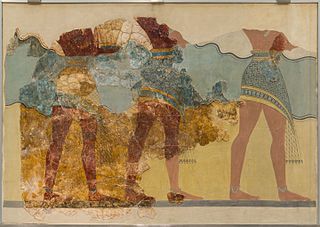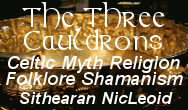Ariadne's Tribe: Minoan Spirituality for the Modern World
Walk the sacred labyrinth with Ariadne, the Minotaur, the Great Mothers, Dionysus, and the rest of the Minoan family of deities. Ariadne's Tribe is an independent spiritual tradition that brings the deities of the ancient Minoans alive in the modern world. We're a revivalist tradition, not a reconstructionist one. We rely heavily on shared gnosis and the practical realities of Paganism in the modern world. Ariadne's thread reaches across the millennia to connect us with the divine. Will you follow where it leads?
Find out all about Ariadne's Tribe at ariadnestribe.com. We're an inclusive, welcoming tradition, open to all who share our love for the Minoan deities and respect for our fellow human beings.
Minoan Clothing: Bronze Age Fashion. part 1
People are fascinated by Minoan clothing, but they're also confused by it. I thought I would take a little time to explain and show you some images from Minoan art so we can all enjoy the lovely garments the Minoans wore.
Please note that this is a two-part blog post (Part Two coming next week) but it's NOT divided into men's vs. women's clothing, because there is considerable overlap in some of the styles of clothing worn by different genders.
Please also be aware that in Minoan art, men are depicted with dark red skin and women with unnaturally white skin. These colors are not meant to be realistic (DNA evidence tells us that the Minoans all had brown skin) but instead have symbolic significance.
First, I'd like to address the most visually obvious and commonly commented-on aspect of Minoan clothing: women's bare breasts. It's likely there was sacred symbolism involved in the way Minoan women's clothing frames the breasts and draws attention to them. It has been suggested that the open-front tops were for priestesses only, and regular women wore closed tops. I don't think this is necessarily the case, given the values of Bronze Age Mediterranean cultures, and I suspect this attitude reflects modern discomfort with nudity more than anything else.
Women of all socioeconomic classes in other Bronze Age cultures of the eastern Mediterranean - Egypt and Mesopotamia, for instance - went topless regularly, as is clearly depicted in the art of the time. And children as well as working class and poor women (and men) went completely naked, and no one thought anything of it. There was no morality, or immorality, associated with the bare human body. So don't judge Minoan fashion by post-Christian-era values.
The Minoans had flax (linen) and wool - we know that for certain - and they may have had wild silk and/or sea silk as well. They spun thread and wove cloth on warp-weighted looms, and they used natural dyes to create a wide array of colors. They may also have embroidered or painted designs on the cloth for further decoration.
Now let's move on to the actual clothing, working our way from least to most, so to speak. All images are from Wikimedia Commons.
As I mentioned above, nudity was common in the Bronze Age Mediterranean, especially for children and working class people. Here in this fresco from building Beta in Akrotiri we see two boys boxing, wearing nothing but decorative belts and some jewelry, and (probably leather) wrappings on one hand each.

Sailors and fishers, among others, may have gone completely naked for practical reasons. Here's a young fisherman proudly displaying his catch on a fresco from the West House in Akrotiri.

Loincloths were practical for many activities, including athletic endeavors like bull leaping. The athletes in the famous Bull Leaper fresco from Knossos (two women and a man) are all wearing loincloths with what appear to be codpieces, perhaps made of leather, over them. They're also wearing tight-fitting short boots. Most images show Minoan people barefoot, but there are depictions of boots like these as well as sandals.

Loincloths were common garb, which makes sense given the hot climate on Crete and nearby areas. This young man, a bronze votive figurine from Crete, is wearing a simple loincloth:


Minoan men also wore a kind of short skirt similar to the Egyptian shendyt, as seen in this portion of the Procession fresco from Knossos, though the Minoan version was quite colorful compared to the typically white Egyptian ones:

A simpler short skirt, without fringe and possibly without wrapping, appears in one fresco fragment from Knossos and would have been practical attire for a variety of activities:

All right, we'll end here for Part One. Part Two will cover the clothing that... covers more. ;-)
Comments
-
Please login first in order for you to submit comments




















